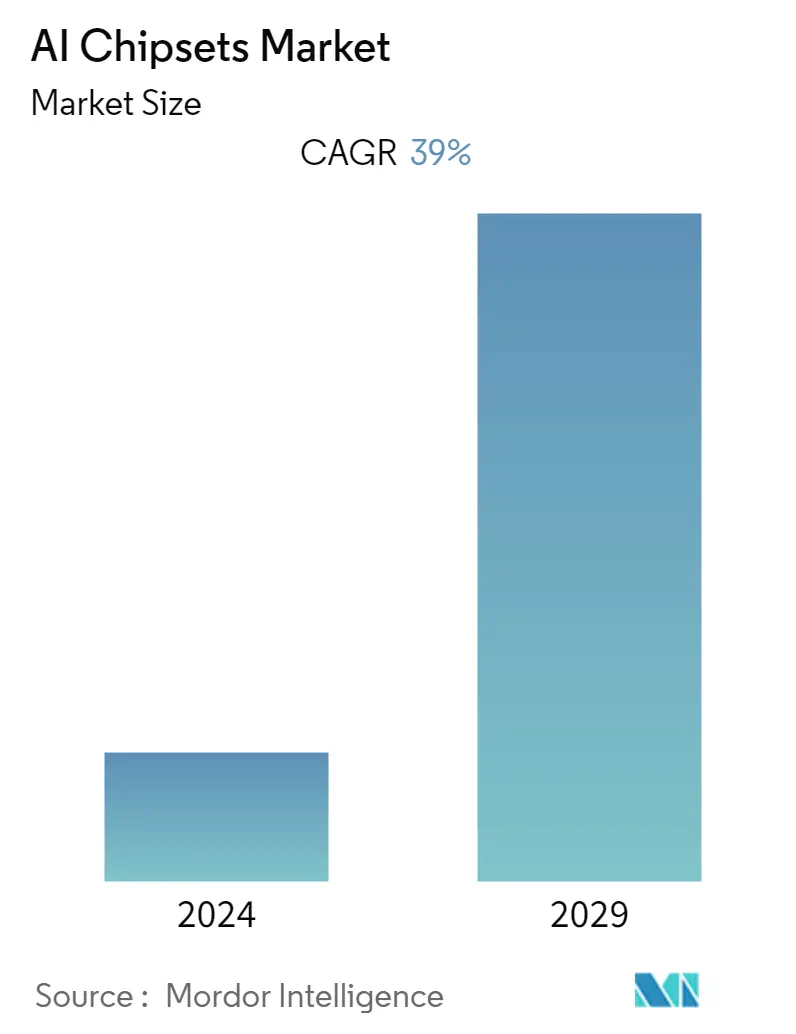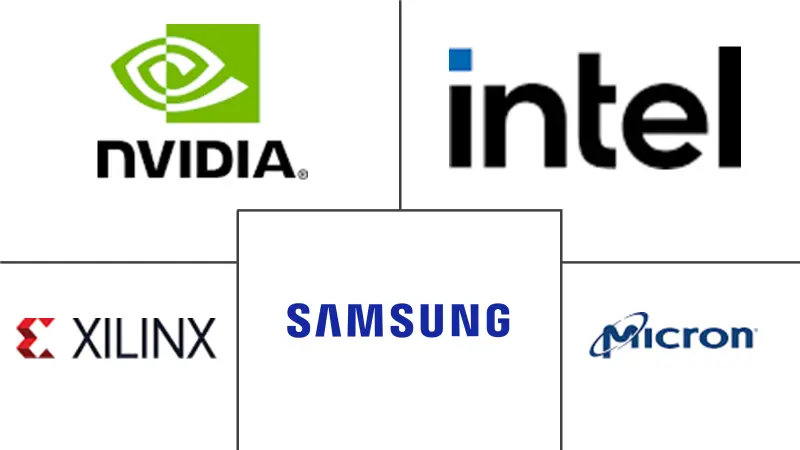Market Size of AI Chipsets Industry

| Study Period | 2019 - 2029 |
| Base Year For Estimation | 2023 |
| CAGR | 39.00 % |
| Fastest Growing Market | Asia-Pacific |
| Largest Market | North America |
| Market Concentration | Medium |
Major Players
*Disclaimer: Major Players sorted in no particular order |
Need a report that reflects how COVID-19 has impacted this market and its growth?
AI Chipsets Market Analysis
The AI chipsets market is anticipated to register a CAGR of 39% during the forecast period. Various factors, such as a rise in demand for edge analytics, autonomous driving, and smart appliances in the consumer electronics industry, are anticipated to support the market growth.
- The rapidly growing demand for machine learning in multiple sectors, such as automotive, finance, and retail, boosts the adoption of AI technology. The most famous application of AI chipsets in the automotive industry includes manufacturing a driverless car to achieve the L5 level of autonomous technology.
- Artificial intelligence (AI) is entering nearly every aspect of consumer electronics. Its uses are growing beyond cell phones to include the automotive industry. This growth is bringing a slew of new prospects to the semiconductor industry. The requirement to process a constantly rising volume of data is a major element influencing the AI chipset market's growth.
- Moreover, as AI enables machines to perform various activities like those operated by human beings, numerous opportunities are expected to open in the future. Additionally, the growing focus on developing human-aware AI systems is boosting the growth of the market. However, the lack of a skilled workforce and the absence of standards and protocols are restraining the market growth.
- The need for a large number of ASICs is anticipated to rise as artificial intelligence gains more ground in global technology. Companies, such as Amazon and Google, are already in the process of fortifying their server silicon endeavors.
- Companies are using new technologies, such as artificial intelligence, to design new AI chips. For instance, as per a paper published in the journal Nature in June 2021, Google is using AI and machine learning to help design its next generation of AI chips. According to the company, work that takes months for humans can be completed by AI in under six hours.
- Furthermore, the increasing neuromorphic research is an emerging field within the areas of AI hardware anticipated to boost the demand for AI chips. The intuition here is to develop techniques inspired by the real neurons in the brain function; hence, the name neuromorphic was used. The low energy and high-quality output of neurons have enthused researchers to develop Spiking Neural Networks (SNNs). However, these SNNs require hardware of their own.
- The outbreak of COVID-19 has negatively impacted the AI chipsets market's supply chain and production. The impact on semiconductor producers was severe. The acceptance of AI for improving consumer services and reducing operational costs, the expanding number of AI applications, improving processing power, and the growing adoption of deep learning and neural networks are major market drivers. Many companies in the semiconductor supply chain worldwide restricted or even stopped operations due to workforce constraints, causing a bottleneck for semiconductor-dependent end-product companies.
